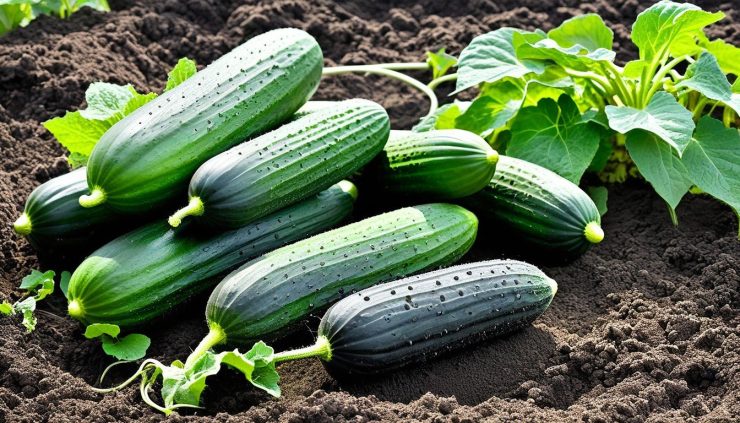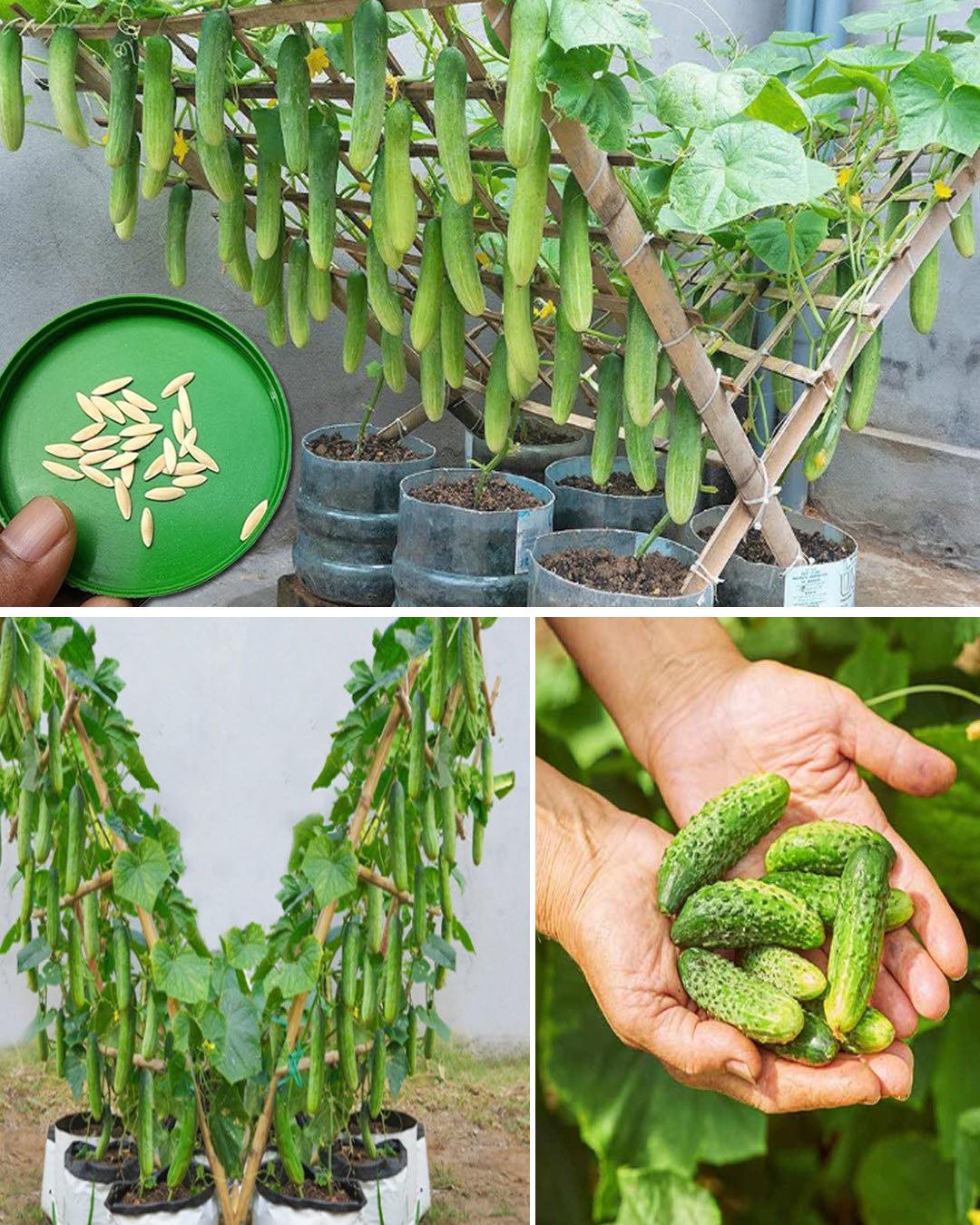Cucumbers are a popular and refreshing addition to salads, sandwiches, and pickles. If you’re a fan of these crunchy, green vegetables and have limited garden space, or maybe you just prefer a controlled and portable gardening approach, then growing cucumbers in soil bags at home is an excellent solution. In this article, we’ll guide you through the process of successfully cultivating cucumbers in soil bags, so you can enjoy a bountiful harvest right at your doorstep.

Why Choose Soil Bags for Growing Cucumbers?
Growing cucumbers in soil bags offers several advantages, making it an appealing option for many home gardeners:
Space EfficiencySoil bags are compact and can be placed on patios, balconies, or any small outdoor area, making them an ideal solution for gardeners with limited space.
Portability.You can easily move soil bags around to optimize sunlight exposure, temperature, and other growing conditions, ensuring your cucumbers thrive.
Weed and Pest Control.Soil bags provide a controlled environment, reducing the risk of weeds and making it easier to monitor and prevent pest infestations.
Improved Drainage.Soil bags typically have good drainage, preventing waterlogged roots and promoting healthy cucumber growth.
Here’s a step-by-step guide on how to grow cucumbers in soil bags:
Step 1: Choose the Right Soil Bag
Select a sturdy and well-constructed soil bag that is at least 5 gallons in size. The bag should be made from a durable, UV-resistant material to withstand outdoor conditions.
Step 2: Fill the Bag with Quality Potting Mix
Fill the soil bag with a high-quality potting mix. Ensure it’s well-draining and enriched with organic matter. Leave a few inches at the top for planting.
Step 3: Plant Cucumber Seeds or Seedlings
You can plant cucumber seeds directly into the soil bag or transplant seedlings. If using seedlings, create a hole in the potting mix, insert the seedling, and gently pat down the soil around it. If using seeds, plant them about 1 inch deep, following the seed packet instructions.
Step 4: Support the Cucumbers
Cucumbers are vining plants that need support to grow upright and produce more fruit. You can use stakes, trellises, or tomato cages to provide the necessary support. Place these supports in the soil bag as your cucumber plants grow.
Step 5: Sunlight and Watering
Position your soil bag in a location that receives at least 6-8 hours of sunlight daily. Cucumbers require consistent moisture, so water your plants regularly, ensuring the soil remains evenly moist but not waterlogged.

Step 6: Fertilize
Cucumbers are heavy feeders. Use a balanced, water-soluble fertilizer to feed your plants every 2-3 weeks to ensure they have the necessary nutrients for healthy growth.
Step 7: Pruning and Training
As your cucumber plants grow, prune away any dead or yellowing leaves and regularly train the vines to grow up your chosen support structure. This encourages better air circulation and sunlight exposure, leading to a healthier and more productive cucumber plant.
Step 8: Harvesting
Cucumbers are ready to harvest when they reach the desired size and are firm to the touch. Harvest them regularly to encourage the plant to produce more fruit.
Growing cucumbers in soil bags at home is a practical and rewarding way to enjoy fresh, homegrown cucumbers even if you have limited space. With the right soil, care, and attention, you can produce an abundant cucumber harvest that will add a delicious crunch to your salads and sandwiches. Whether you’re a seasoned gardener or just starting, soil bags make the process accessible and enjoyable. Happy gardening!
News
The WILDEST ENDINGS Of Week 12
Week 12 in professional football proved to be an unforgettable chapter filled with come-from-behind rallies, nerve-racking final possessions, and improbable last-second heroics. Fans witnessed an array of shocking comebacks that had them clutching the edges of their seats until the…
Keaton Wallace’s CAREER-HIGH 27-PT Performance In Chicago!
Keaton Wallace delivered a stunning performance in Chicago that not only showcased his growing confidence but also served as a milestone in his professional basketball journey. The rising guard dropped a career-high 27 points, captivating fans with a display of…
Damian Lillard Scores 30 Points vs Magic
Damian Lillard put on a show against the Orlando Magic, lighting up the scoreboard with a smooth 30-point performance that reminded everyone why he is regarded as one of the most lethal offensive threats in the NBA. From deep threes…
Jalen Green Was UNSTOPPABLE – 34 Points In Denver!
Jalen Green delivered a scintillating performance in Denver, putting on display the unique blend of athleticism, creativity, and confidence that has captivated fans and pundits across the league. From the opening tip, the Houston Rockets guard showcased unwavering energy, attacking…
Stephen Curry Makes It Look EASY – 31 Points In Minnesota!
Stephen Curry put on a shooting clinic in Minnesota, dazzling fans and opponents alike with his signature blend of skill, flair, and efficiency. The Golden State Warriors point guard made the game look effortless as he racked up 31 points,…
Final 3:07 CRAZY ENDING Timberwolves vs Warriors 👀
The recent clash between the Minnesota Timberwolves and the Golden State Warriors was a game that will be etched in the memories of fans for years to come, particularly for its heart-stopping final 3 minutes and 7 seconds. This wasn’t…
End of content
No more pages to load











